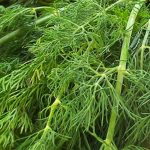Timo
DESCRIPTION
The name of the genus Thymus for the botanist and Greek philosopher Theophrastus, means strenght, courage, awakened qualities in those who smell its balsamic perfume. After others the name of the genus comes from the greek thyos that is "perfume". Thymus belongs to the Lamiaceae family and the genus includes about circa 350 species of plants among which the common Tymus (Thymus vulgaris), originating in the Western Mediterrranean. The Thymus vulgaris is widespread in Italy, especially in marine areas, where it grows in wild or cultivated and, together with the Thymus serpillum (known as serpyllum or lemon tyme), is the most widely used for its therapeutic properties. They are perennial and woody plants (they look shrub and very branched), while its leaves are small and elongated, of green-grey colour covered by thick hair. The Tymus flowering happens between spring and summer, with the emergence of pinkish colour flowers.
COOKING
Thymus is highly appreciated in the kitchen both for its organoleptic qualities as well as for its digestive effect. The Thymus lends itself to aromatizing different dishes: you can use it in the preparation of soups and brots velvety. Excellent in combination with legumes, especially the beans which it helps to make them easier to digest. It marries well with fish or meat dishes, or also with vegetables such as carrots, pumpkin, potatoes,tomatoes, peppers, onions, aubergines and mushrooms. It is also used to perfume wines and to make liquors, its infusioni considered an excellent substitute for tea or coffee. Unlike what happens with other spices, the thymus doesn’t loose its aroma after drying, on the contrary, its fragrance is even more intense.
THERAPEUTIC PROPERTIES
The virtues of the Thymus are related to the presence of a particular Phenol: The thymol, il timolo, a potent antiseptic, antispasmodic and vermifuge. Its antiseptic properties has been known since the old times: in the Herbario novo, a Renaissance article on the medicinal plants, the thymus was recommended cooked with wine, for asthma and bladder infection. In addition, until the first post-war years, most of the most popular disinfectants was tymus based. It has carminative and digestive properties, it’s efficient against urinary tract infection and respiratory tract inflammations, for its balsamic and fluidizing properties Topically, it’s a skin disinfectant and face revitalising, while the essential oil is used for massages against rheumatic pain and to stimulate microcirculation.





